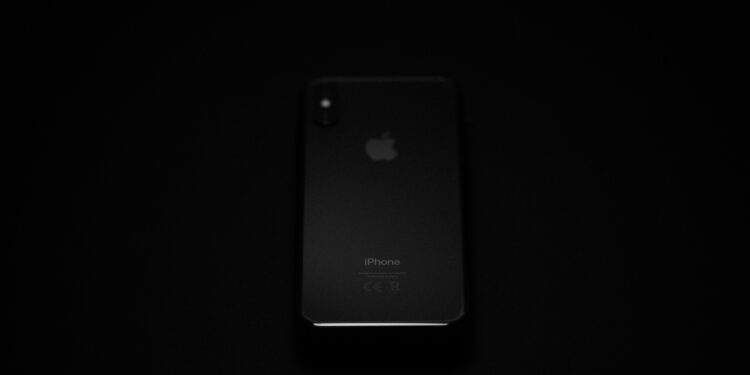According to various sources, Apple is working on a completely new iPhone design for 2027. The occasion: the 20th anniversary of the first iPhone. An iPhone that completely eliminates visible cutouts in the display is being discussed. A so-called all-screen iPhone – a smartphone whose entire front consists of a screen. Initial indications from the supply chain and analysts indicate that Apple is already developing or testing the technical foundations for this.
The iPhone has been constantly evolving since 2007. First, the Home button was removed, then came Face ID, and later the Dynamic Island. Each year, individual elements have been redesigned to create more display space. With the possible 2027 anniversary model, Apple now appears to be facing a major overhaul. The current development aims for a design that completely eliminates cutouts – neither for cameras nor sensors.
The path to all-screen design
According to Bloomberg reporter Mark Gurman, Apple is planning a "bold" iPhone Pro model for 2027. It will be the flagship for the iPhone's 20th anniversary and will feature a novel design that relies heavily on glass. The idea behind this is to relocate both the selfie camera and the Face ID system completely beneath the display. Development is proceeding gradually. According to analyst Ross Young, Face ID could be located beneath the display for the first time as early as 2026—i.e., with the iPhone 18 Pro. This would mean that the Dynamic Island would be smaller, but would remain for the time being, as it would then only cover the camera.
Display roadmap shows clear schedule
For 2027, the next logical step would be to also relocate the camera beneath the display. This would then pave the way for a fully flat display. According to Young's display roadmap, which has been published since 2023, this timeframe fits perfectly with current plans. Additional support comes from leaker Digital Chat Station. He claims that both the iPhone 17 and iPhone 18 will still use the Dynamic Island. This suggests that Apple is working on a gradual transition by 2027—with the goal of a full-screen iPhone.
Technology under the display: Where Apple stands
For Face ID to work reliably under the display, Apple must overcome technical hurdles. The biggest challenge: The sensors must also function correctly through the display, especially in the infrared range. Today's OLED and LCD panels interfere with infrared signals, which impairs Face ID's functionality. There are several approaches to solving this:
- Transparent OLED displays that selectively transmit infrared
- LTPO displays with deactivatable subpixels for sensor visibility
- Optical fiber layers that guide signals in a targeted manner
- IR pass materials that make sensor zones invisible
Apple will likely need to use a combination of these technologies to keep under-display facial recognition at the current level.
Selfie cameras under the screen
There's also movement in the camera space. While Android manufacturers are already installing selfie cameras under the display, Apple is working on its own solution. According to a report from April 2024, LG Innotek, a South Korean supplier, is developing special UDC (under display camera) cameras that do not require visible holes. They use a freeform optic with multiple lenses. The goal is to minimize image distortion and light loss. This technology is intended to prevent a visibly deteriorating image quality under the display – a problem that still exists with current UDC solutions from other manufacturers.
Foldable iPhone as a technology carrier
In addition to developing all-screen devices, Apple is also working on foldable devices. A prototype with an 18.8-inch display is reportedly already in existence. It includes a metal superstructure lens that integrates Face ID components and enables them to be used under the display. A foldable iPhone model, which could possibly be released as early as 2026, is said to forgo Face ID altogether. Instead, it will reportedly use Touch ID in the side button. The camera will also be located under the display. This shows that Apple is actively testing various configurations for sensors and cameras under the display – with and without facial recognition.
- Foldable iPhone to arrive in 2026 – what is known so far
- iPhone Fold: The surprising solution for mini lovers?
The 2027 anniversary model: iPhone 19 or iPhone 20?
Whether the 2027 model will be called "iPhone 19" or "iPhone 20" remains to be seen. In 2017, Apple released the iPhone 8 and iPhone X simultaneously. It's conceivable, then, that a similar strategy will be adopted for the anniversary—perhaps with a classic model and a special model with an all-screen design. A continuous glass display—without a notch, dynamic island, or visible camera—would certainly be a fitting statement for the iPhone's 20th anniversary. And a further design step in the lineage of earlier milestones like the iPhone 4 or iPhone X.
2027: Everything points to an all-screen iPhone
Apple appears to be systematically preparing for an iPhone without display cutouts. The foundations have been laid: Face ID under the display, advanced selfie cameras, new display materials. This technology could be ready for production by 2027. A full-screen iPhone would then no longer be just a rumor, but the new standard. Just in time for its 20th anniversary – and likely with plenty of attention in the tech world. So if you want to know where the iPhone is headed: towards invisible technology that works completely in the background. Just a screen, nothing else. The 2027 iPhone could deliver just that. The best products for you: Our Amazon Storefront offers a wide selection of accessories, including HomeKit. (Photo by Unsplash / Polina Silivanova)
- New era for the iPhone: What Apple plans for the next few years
- iPhone 2027: What Apple is really planning for its anniversary
- iPhone 17 – The most important innovations at a glance




